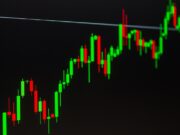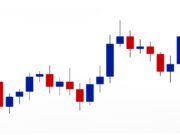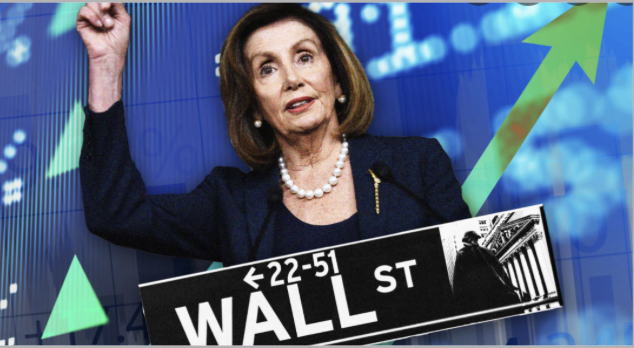Seeking out great stocks to buy is important, but many would say it’s even more essential to know which stocks to steer clear of. With fears of a global recession escalating, now is the time to prepare for the worst because a losing stock can eat away at your precious long-term returns. So, determining which stocks to trim or eliminate is essential for proper portfolio maintenance, especially now.
Even the best gardens need pruning, and our team has spotted a few stocks that seem like prime candidates for selling or avoiding. Continue reading to find out which three stocks our team is staying away from this week.
The dramatic shift from brick-and-mortar shopping to e-commerce over the past two years has been a tremendous obstacle for investors in retail. With interest rates marching higher as the economy slows, this is likely just the beginning of the pain for retailers.
Recent data suggests that 25% of America’s 1,000 malls will be closed in the next 3-5 years. As a cornerstone of shopping malls across the country, department store chain Macy’s (M) has been among the stocks to suffer. Over the past twelve months, M stock has declined 36% to trade at $22.23 a share.
Although Macy’s delivered a solid third-quarter report along with an increase to its earnings outlook, there are obstacles ahead for the iconic retailer. With the Federal Funds Rate at its highest level since 2008 and no sign of slowing down, the consumer economy faces unprecedented challenges. While anyone left holding M stock could enjoy a holiday bump, in the face of a looming recession, any increase seems likely to be short-lived.
Fintech company Upstart Holdings (UPST) management provided less than inspiring Q4 guidance last week when the company posted disappointing third-quarter results, sparking yet another sell-off for the stock. UPST share price is down more than 95% from its October ATH, and it may have more to go as bank partners tighten their fists.
Amid aggressive shifts in monetary policy, institutional lenders are less willing to fund Upstart’s loans than ever. It makes sense for backers to be so cautious in the current macroeconomic environment. Rising interest rates will continue to add pressure on consumers leading to more defaults. Upstart is especially vulnerable as its AI models have yet to be tested during a significant down period in the credit cycle.
In the second quarter, Upstart more than doubled the amount in loans it funded with its cash in just a single quarter. The company reported $600 million in loans on its balance sheet, up from $250 million in the previous quarter, severely exposing its balance sheet to credit risk at a terrible time. This contributed to Upstart’s third-quarter revenue miss and management’s decision to lower Q4 guidance.
Management sees Q4 revenue in the range of $125 million to $145 million. That implies revenue growth of roughly 18%, representing a sharp deceleration from the 252% revenue growth UPST delivered in Q4 2021. With growth momentum slowing while competition in the space is simultaneously growing, UPST is one stock to stay away from for now.
Food delivery leader and pandemic darling DoorDash (DASH) was one of the big winners in the shift to stay-at-home culture. Between 2019 and 2021, DASH revenue increased by 451% from $885 million to $4.88 billion. But once the economic reopening was complete, Wall Street’s enthusiasm over the stock sharply halted. Since hitting its peak in November of last year, the stock has plunged more than 75%. Now that the tide has washed out, investors are left to access what’s left, searching for an answer to the looming question – is profitability in the cards for DoorDash?
DoorDash has never generated a profit, with the exception of the second quarter of 2020, where it made a profit of $23 million. “It took a global pandemic to drive the firm’s one-quarter profitability. The firm has not been profitable since, and we think it may never be,” said David Trainer, the CEO and founder of New Constructs.
The company reported third-quarter revenue and EBITDA of 4% and $29M above consensus expectations, but DASH’s EPS is estimated to remain negative in 2022 and 2023. The company expects $49 to $51 billion in gross order volume in 2022, implying a modest 14% increase from $41.9 billion last year. However, that’s not enough to justify DASH’s lofty valuation. Currently, the stock trades at a trailing twelve-month price-to-sales multiple of 3.7, expensive compared to top competitors like Uber Technologies (UBER), which trades at a price-to-sales multiple of 1.9 – almost half that of DASH.
You might also like:
- The Crypto Melt-Up has Begun
- “A.I. is a Tidal Wave” – Here’s What to Buy
- Beware Executive Order 14067
- #1 AI Stock for 2024 and Beyond
- Bank plague 2024
- Gates, Bezos, and Buffett invest in AI Keystone
- Congress Just Fast-tracked New A.I. Energy Breakthrough
- Elon Musk: THIS will be bigger than Tesla
- EV charging stations that pay you up to $93/day!
- Legendary Wall Street Stock-Picker Names #1 A.I. Stock of 2024, Live On-Camera
























